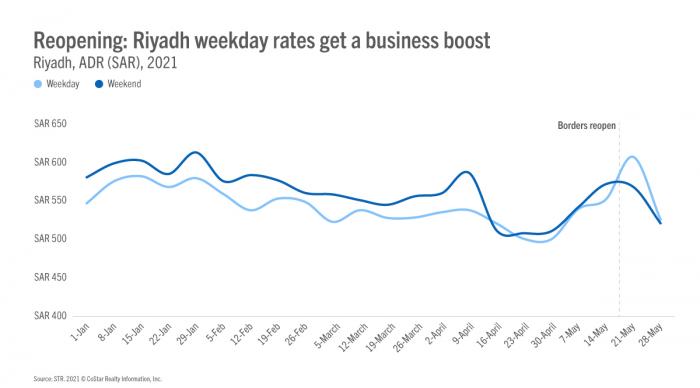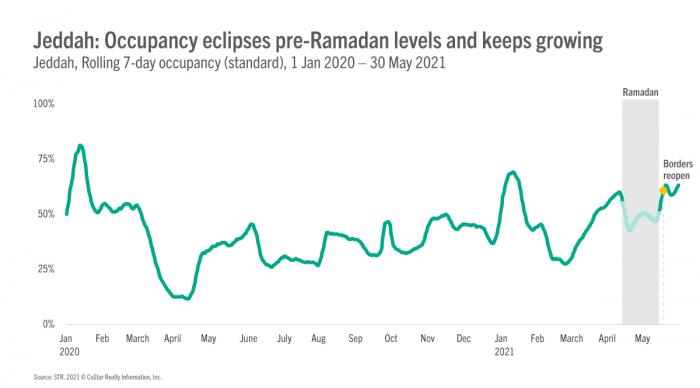On 17 May, the Kingdom of Saudi Arabia cautiously opened its borders and ended months of strict border controls. While restrictions are still in place depending on source market, traveler vaccination status, and reason for travel, the news was met with much relief both inside and out of the Kingdom.
Saudi Arabia had moderate success promoting domestic travel while borders remained closed, but other popular Gulf destinations like Dubai are now open to Saudi nationals and residents. As a result, the Kingdom must look to supplant domestic demand with international arrivals. It’s a tall order, given that tourist visas are suspended and Umrah visas strictly limited, but an order that two of the Kingdom’s biggest markets have met over the two weeks since reopening.
Business boost
For capital market Riyadh, leisure travel has never been a primary demand driver. Prior to the COVID-19 pandemic, weekday occupancy and average daily rate (ADR) outpaced weekend performance, a result of both climate and location as well as the Kingdom’s tight control over tourist visas. COVID-19 reversed the long-term trend and narrowed the gap between weekday and weekend performance, but weekday rates spiked almost immediately after the Kingdom reopened its borders in late May.

